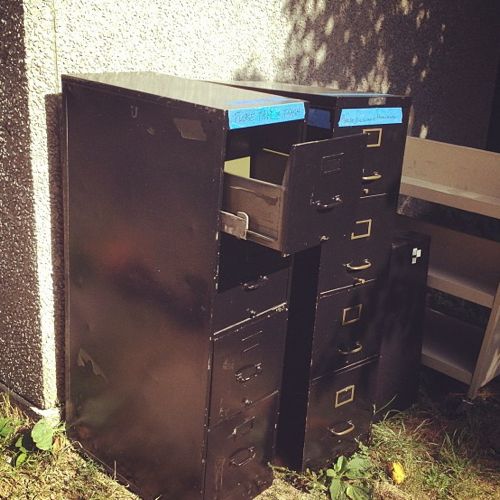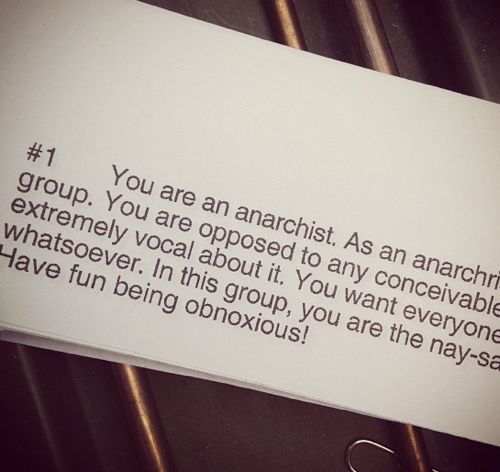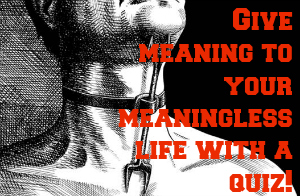MARK: Can you start by telling us a little about who you are, the work that you do relating to prison labor, and how it is that you first became interested in the subject?
BOB: …Back in 1981 I was convicted of a white collar crime and went to prison in Florida. While serving my sentence, I worked most of the time for the prison industry there, Prison Rehabilitative Industries and Diversified Enterprises (PRIDE). Back then it was run by drugstore magnate, Jack Eckerd. During my tenure with PRIDE I worked closely with Eckerd and PRIDE President, Floyd Glisson on product development and inmate issues. I was a college grad with a degree in architectural drafting and design, and my abilities earned me the position of head of PRIDE’s “Tiger Team,” responsible for developing and prototyping new customer products, and designing new seating and modular office systems (office cubicles, work stations, panels, etc.). I designed the new factory for PRIDE’s office systems industry, and, when complete, I headed up their CAD training program, instructing other inmates in computer drafting and engineering.
At that point in time, PRIDE’s pursuits were in keeping with a mission statement that stressed the training and job placement of prisoners, in order to reduce recidivism, and keep these people from reoffending once released. PRIDE not only trained them, they had a job placement service on the outside that got them employed after release.
By 1990, I was home, and continued to work with Eckerd on youth programs, and helping inmates who were released to find jobs. In 1990, Eckerd and Glisson left PRIDE, with Eckerd publicly saying he did not like the direction the new PRIDE executive staff was taking the company, and expressing concern over new “accounting” procedures put in place by the same administration. From 1989 through 1996, I continued to work in my spare time finding jobs for those released from prison, and performing some free-lance consulting with PRIDE’s corporate MIS in Clearwater, Florida. During that time, I saw firsthand that Eckerd had been correct – PRIDE had gone from a company dedicated to rehabilitating inmates to one that was profit-driven. Inmate wages stayed where they had been since 1983, inmates were trained on antiquated equipment (and thus not employable for the same work when released), prisoners were being worked longer (with no overtime), etc.
I moved to Indianapolis in 1996, and, from that distance, lost track of PRIDE, concentrating on my life up here and working like everyone else. In 2002, I had an unfortunate “mistake” created by the Florida authorities, who decided that I still owed them some time on probation from the 1981 case. I was picked up, taken back to Florida, and sent back to prison, where it took me two years to get the court to realize that they were incorrect, and release me. During that period, I was again assigned to work for PRIDE, in a factory in north Florida. When I got there, everything was different than it have been previously… except the pay was basically the same. (It hadn’t really changed over the intervening 20 years.) There was no longer a real job training effort, rather everything revolved around filling orders and shipping them out on time (regardless of the quality).
They were participating in a program known as the “PIE Program” which allowed prisoners to earn as much as minimum wage for working on orders which were sold in the private sector. None of the prisoners knew what the PIE Program was, just that they made more money – even considering that 80% was taken back for room and board, victim restitution, taxes, etc. I had my wife get me a copy of the PIE Program regulations from the US Department of Justice, and send it to me. I sat down and read it, and discovered that it had mandatory requirements that PRIDE was supposed to abide by (mandatory payment of prevailing wages for workers, no displacement of private sector workers or interference with local labor groups and unions, etc.). I was assigned to quality control as a supervisor and discovered that the company was avoiding paying prevailing wages, and was placing “in-house” orders for products that they knew were about to enter the production stream as PIE products. In this way, they paid inmates between $.20 and $.50 an hour for labor, placed the products in inventory, and then drew them out to fill PIE orders, thus avoiding paying even minimum wage scale to the inmates. There was a lot of other hanky panky going on as well (shifting hours from one pay week to another to avoid overtime, etc.).
I filed complaints with the Governor and FDOC about PRIDE opening 9 separate for-profit corporations that were being used to exploit the PIE program, and about their policies and procedures at more than 40 separate factories. I approached supervisors at the plant and explained that what I thought they were doing was illegal under the federal PIECP regulations [18 USC 1761(c)]. I was allowed to change jobs and went home shortly thereafter, once the court ruled and released me.
I continued to pursue complaints with the Governor (Bush) and pushed for an investigation by the DoJ. All federal complaints were directed to the Bureau of Justice Assistance which in turn sent them on to the National Correctional Industries Association (NCIA), which had been given oversight of the program by the BJA in ’95. The NCIA never responded to my numerous complaints. In fact, they blocked any incoming emails from my address. While I was pursuing this from Indiana, the Florida Inspector General responded to my complaints and performed an audit of PRIDE. He discovered that PRIDE board and executive staff had formed the separate corporations, loaned themselves $18 million dollars, awarded the spin-offs no-bid contracts worth another $20 million, and had begun to write down the debts owed to PRIDE by those spin-offs. In the end, the entire executive staff were asked to resign, along with half the board (appointed by the Governor). And, in the end, only $400K, of the more than $38 million, was ever recovered.
The Secretary of the FDOC, James Crosby (a Bush Cabinet appointee) was on the PRIDE Board. He continued to turn a deaf ear to my ongoing complaints, even knowing that my complaints had caused the IG’s to audit PRIDE, and catch the illegal transactions. My complaints, at this point, concerned the PIE Program, and how PRIDE had been allowed to partner with private sector companies that were using the inmates as a nearly slave-labor workforce. Additionally, from 2000 through 2005, PRIDE had simply stolen five of those companies outright. Under the contracts, the partner was to supply all of the equipment, materials and proprietary technologies to PRIDE, which then chose one of its factories in which to make the products for those companies. Once the inmates were trained, and the staff was knowledgeable about the operations and customers of the private companies in question, PRIDE would then falsely claim these partner companies owed them money for processing, etc., and demand hundreds of thousands of dollars be paid to them immediately. When the companies balked, PRIDE had the FDOC throw the company’s supervisors off the prison grounds. Then, PRIDE would seize all of the equipment and materials, and simply continued the operation on their own, selling to the “partner’s” customers. At the same time, PRIDE would sue the companies in a friendly court in Clearwater, and tie them up, making them spend huge amounts of money to try and recover their businesses and assets.
One of those owners that lost his business to PRIDE contacted me and I’ve been consulting with him since 2005, trying to help him recover his losses. I went to Florida and met with the board three times in 2006 on behalf of the owner, and in an effort to get PRIDE to become compliant with the PIE Program requirements. To no avail. That same year, Secretary Crosby was indicted and arrested for corruption and kickbacks on a private canteen contract with the Keefe Commissary network (sentenced to 9 years, and still in). His replacement was James McDonough. He contacted me about PRIDE, and we worked together trying to reform PRIDE through January 2008. He had documents and inmate letters from workers at the PRIDE plant, order numbers, copies of pay checks, copies of time cards, etc., which I had supplied to him. In 2007, he resigned from the PRIDE Board and petitioned Governor Crist to abolish PRIDE completely, and turn the prison industries over to the FDOC to operate. The GOP legislature forced McDonough to “retire,” and left PRIDE intact. (Pride has two top lobbyists in Tally, who they retain for $350,000 per year, and they spend hundreds of thousands of dollars per year to keep the lawmakers in line with their agenda).
I opened my website, continued to try and make PRIDE compliant, and began investigating state prison industries state by state. I found more than 40 states participating in the PIECP program, and that the NCIA, the a trade association for the prison industries, had worked with Congress to change legislation, allowing them to develop “Policy” and procedures for the PIE Program, which they had been given oversight of in 1995. I found that, under the program, PRIDE is supposed to turn over 40% of inmate wages to the FDOC to offset the costs of incarceration, but that they lobbied for state laws to divert that money back to PRIDE, to offset their costs of “training.” So, in essence, the inmate wages deducted are used to operate the prison factories. The employees themselves are paying 40% of their wages back to the company. Unbelievable corruption… and I found that it’s also happening in Minnesota, Oregon and Iowa.
MARK: As you and I have discussed, there’s a sense among the citizens of our country that prison labor, while perhaps distasteful, serves a purpose, in that it provides job training for incarcerated men and women who will eventually enter the workforce. Would I be correct in saying that your research has proven otherwise, though?
BOB: The prison industry program was designed to allow for training of offenders on contemporary equipment, using contemporary technologies, to increase the likelihood that, when released, the trained former offender can secure employment and avoid a return to prison. There were several criteria that had to be met for a prison industry to participate, and, as mentioned above, those have all changed through policy amendments. Here is a link to the program overview. (The 9 mandatory requirements are listed on page 3.)
Today the focus is on profits… and training, along with other core mission goals, have been sacrificed in exchange for increased sales and profits. An example of this is that today Florida’s prison industry workforce is comprised of 15% men and women serving life sentences. Overall, 28% of the workforce has at least 15 years until release or possibility of parole/probation. This helps increase production, but takes positions and training out of the reach of short term offenders who could utilize that training in the shortest time to fulfill mission goals.
MARK: Can you give me a sense of how big this is? I realize that we’re talking about dozens and dozens of companies, ranging from IBM to Nordstrom’s, that are utilizing prison labor, but what scale are we talking about? Does it represent a significant portion of our GDP? Is it growing?
BOB: Currently there are more than 300 full scale prison factories operating nationwide. Many are operating two or three shifts in order to keep up with orders and shipping. 109 of those factories are operated by the federal Prison Industries (UNICOR). Here is a link to the NCIA site where they list the companies “partnered” with state prison industries using inmate labor, the products made, etc. The NCIA also has a “Buyer’s Guide,” where consumers and companies alike can shop for prison made or related goods. The NCIA Board is comprised of all those involved in prison manufacturing – prison industry executives, vendors, UNICOR, ACA, etc., and these are the people who determine policy and have oversight over the entire PIE Program, in effect overseeing themselves.
I cannot provide the % of our GDP that prison-made goods represent. I would have to refer you to a CPA or individual with more knowledge than I on this. I can tell you, however, that a conservative estimate of the gross sales in total prison-made goods, in 2010, was $2.4 billion. This is in addition to the $75 billion spent on incarceration. And, it’s worth noting, none of that $2.4 billion is returned to the taxpayers to offset their expenditures for incarceration. The total number of prisoners working in our prison factories nationwide is now estimated at between 600,000 and 1 million, manufacturing thousands of products that include missile guidance components, aircraft wiring for Boeing products, wiring for electronic equipment, phone cables and related sub-products for companies like IBM, Escod Industries, HP, Dell, etc. Federal prisoners also make nearly 100% of the clothing supplied to our military services, canteens, helmets, web belts, back packs, boots, shoes, dress and camo uniforms, underwear, t-shirts, etc.
The actual number of prisoners reported in the PIE Program are skewed, as many who are in training are not counted, and not paid… yet the products the they make are included in outgoing orders. Likewise, any non-PIE products manufactured using standard prison wages, of between $.20 and $.50 per hour (Florida and elsewhere), put in inventory, and later drawn dawn to fill PIE orders (avoid paying even minimum wage to the workers), are also not counted.
MARK: I suspect it’s different from state to state, but, in general, how are much are these prisoners being paid for their labor?
BOB: Pay for inmates range from $0 per hour to around $10.00 per hour. The PIE Program now authorizes inmate pay to begin at the minimum wage level (it is supposed to be set at prevailing wage). After an inmate completes a “pre-training” period of approximately 6 months (without pay), they can then enter the PIE Program at the lowest pay scale. Only after completing 4-5 years of “training” do the inmate workers earn the “potential” of receiving prevailing wage scale. The NCIA has set the prevailing wage scale at the 10th percentile (which means inmate workers receive less in wages than 90% of other workers in the private sector make for the same job description. Inmates can also be transferred from position to position, requiring new training, which stalls their wage progression, saving more money for the prison industry and their partners. Of the number of prisoners working in prison industries, I estimate less than 1% ever reach even the potential for receiving prevailing wages.
MARK: So, is it safe to assume that this is a profit center for both public and for-profit prisons?
BOB: Yes. Though prison industries are self-sustaining and operate without any tax funding, the taxpayer does not share in the profits made. All profits made are to the private sector companies, with a small percentage going to the prison industry itself. In many instances today, the prison industry is both the employer and customer, not partnering with companies. Instead, they determine the products, develop the markets and sell the products under their own labels. The PIE Program provides a loophole… unless the products leave the state of manufacture, the industry is not required to abide by the PIECP mandatory requirements on pay, benefits, hours, etc. This allows them to sell to brokers who have a shipping address in the state. Once the items are received by the brokers, they ship the products all over the country with impunity, and thus avoid paying PIE wages, or having to abide by the prohibition against unfair competition with private companies, and the requirement of getting labor and unions to sign-off on the operation.
MARK: Can you talk a little about the point of intersection where for-profit prisons and the prison labor industry meet? Are there regulations in place to address the enormous conflicts of interest that must exist?
BOB: The points of intersection between private prison companies and prison industry and profits can best be demonstrated by a former company, US Technologies (UST) and their contractual partnership with Geo Group (then Wackenhut Corrections Corp). Read the SEC filing of UST here. (Begin on page 3 with the overview. Then read about the BOD of UST on Page 4.)
On page 9, you’ll find UST/LTI were given facility leases for as little as $1.00 per year, with subsidized utilities by Geo in Florida and Texas. UST folded in 2006, after the CEO swindled investors out of nearly $20 million, and the SEC devalued their stock. Today, another company now takes their place, brokering inmate labor to companies wanting to reduce wage and overhead – from the same physical address in Lockhart, Texas that UST operated out of. This is OnShore Resources.
Just prior to the 2000 filing by UST… a meeting was held in DC with Janet Reno serving as keynote speaker (in 1998). Another meeting was held the same afternoon. ALEC member Rep. Ray Allen (R TX) was a speaker along with Pam Davis, CEO of PRIDE (the Florida private prison industry corporation) and Florida Rep. Bill McCollum (R). They met to discuss the expansion of the PIE Program nationwide. Following this meeting, the PIE Program exploded from state to state. Ray Allen was the Texas Chairman of the Committee on Corrections, a lobbyist for the NCIA, and, by 200,3 would head ALEC’s Criminal Justice Task Force. In ’94, Allen introduced legislation in Texas to expand the state’s prison industry program under PIECP. Once passed, he took it to ALEC, who adopted it as model legislation titled, “Prison Industries Act,” and disseminated it throughout the US from 1999 on. This has served as the standard for prison industry operations since 1999. This is exactly how the Stand-Your-Ground law was born, introduced in one state by ALEC members, then adopted as model legislation, and now has appeared in more than 20 states. It is ALEC’s most notable and effective MO.
There is no conflict of interest, they drown out the complaints of those in the private sector who object to the use of inmate labor and about unfair competition. The answer given to the objectors is to become competitive in their markets by partnering with a prison industry and using inmate labor.
MARK: Are you aware of any significant prison labor activities taking place in Michigan that my readers should be aware of?
BOB: Your state has the Mackinac Center (funded by the Koch brothers) that has been pushing for using inmate labor for production needs of private companies since 2002. Michigan is pushing for privatization of prisons, inmate healthcare and food services right now. Included in this, they’re pursuing legislation that would allow prisoners to be used by private companies as a labor source… Here’s a clip from the last link:
“Michigan lawmakers are taking it a step further. They want to allow the private prison companies to employ the prisoners to perform duties within the prison, such as custodial and food service, but first the state must legislate an exemption to the minimum wage laws so the private companies can have what will amount to a free work force to run the prison where they will literally have a huge captive labor force at their disposal to contract-out to make millions in corporate profits, all while enjoying Snyder’s generous corporate tax cut on their bounty.”
This article also links these efforts to ALEC, CCA, Geo and the model legislation they’ve introduced in Michigan. What your readers need to understand is that for every job taken over by a prisoner, a private sector worker or union member loses his/her job. In this manner, the state “saves” money through reduced wages and number of employees. Corporations get nearly free labor and use that to replace American workers.
MARK: I can see how this may fly in a country that doesn’t have unemployment over 8% (and much higher in places). How do legislators respond, though, when you ask why our utilization of cheap prison labor is growing at a time when jobs for tax-paying Americans are becoming harder and harder to find?
BOB: The response to my probes about employing prisoners in lieu of private sector workers generates a two-fold response depending upon whether the inmates are taking over public or private sector jobs. In both situations lawmakers respond with claims that inmates need training and the industries fulfill that need to help “reduce recidivism.” This is a lie to begin with. Many studies have shown there is no noticeable reduction in recidivism rates when an inmate is employed in prison industry programs. In the case of the public sector, lawmakers state that they are helping municipalities, state departments and agencies to be fiscally responsible through reducing the number of employees, and health and retirement benefit requirements, while teaching the inmate worker a trade. Of course, when inmates are used for free, cheap or slave labor, employers are reluctant to employ those same inmate employees once released – and pay them a fair wage, when instead they can simply continue to use the replacement provided by the prison classification process.
MARK: Anything that you would like to add on the role of ALEC?
BOB: ALEC created the Prison Industries Act and the Private Correctional Facilities Act in 1995 as the above links attest. This is an agenda they have pushed for their corporate members for more than 15 years now. They have been quite successful, and, as states have approached the bankruptcy abyss due to paying for the increased incarceration, ALEC is now turning their attention to “reforming” that which they created through the “Right on Crime” initiative advanced by Gingrich and Pat Nolan of Prison Fellowship Ministries and the American Bail Coalition (ABC). ALEC pushed for abolishing parole, and that legislation served to increase prison populations exponentially. Now, Conservative politicians are saying that they were wrong in their pursuits of Tough on Crime policies, mandatory drug sentences, and similar efforts. To make it right, they now propose that, in lieu of parole, states pass legislation to allow inmates to apply for an early release bond to ensure the state that they will not reoffend. These bonds will be underwritten by the ABC member companies, and require the inmate or his family pay a 15% fee for the $25 to $50k bonds. Of course this will create a windfall of money for the ABC companies, make the GOP lawmakers appear to have “solved” a problem they actually created in the first place, and will allow the ABC bondsmen to have total control over the released inmates through GPS ankle monitors (made by an ALEC member corp) and monitored by another company (also an ALEC member corp).
Overall the prison industry and privatization legislation has been responsible for more than a trillion dollars in profits over the years, Mark. Though ALEC claims they have dissolved that task force, the legislative efforts of that group has simply been absorbed by the remaining task forces.
And, here, for those of you who are more visual, is an NCIA ad, encouraging companies to make use of prison labor.
I particularly like how the voiceover actor says, “Be part of a progressive business solution.”
You asked for a solution to off-shoring, America. Well, here it is… Now, thanks to the likes of ALEC, we can bring jobs back to this country AND compete with the slave wages of China. It’s a huge “Win, Win.”




 Recently, while in Grand Rapids, I had the occasion to meet
Recently, while in Grand Rapids, I had the occasion to meet  MARK: White Dog was at the forefront of the local food movement, using local ingredients, nurturing relationships with farmers in the region, and encouraging other restaurants to do the same. If I’m not mistaken, you not only cultivated a network of local suppliers, but you shared your supplier list with your competitors. (My guess is that you wouldn’t refer to them as competitors, but you know what I mean.) Why did you think that this was important? Was it in reaction to the practices of factory farms, especially as they related to animal welfare? Or, was it more about taste and quality? Or, were you consciously trying, in your way, to hasten the reemergence of the small-scale “family” farm?
MARK: White Dog was at the forefront of the local food movement, using local ingredients, nurturing relationships with farmers in the region, and encouraging other restaurants to do the same. If I’m not mistaken, you not only cultivated a network of local suppliers, but you shared your supplier list with your competitors. (My guess is that you wouldn’t refer to them as competitors, but you know what I mean.) Why did you think that this was important? Was it in reaction to the practices of factory farms, especially as they related to animal welfare? Or, was it more about taste and quality? Or, were you consciously trying, in your way, to hasten the reemergence of the small-scale “family” farm?









